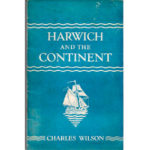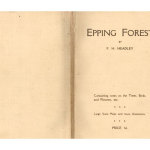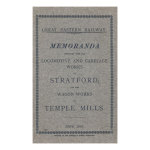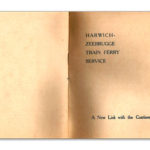Description
Traffic to the Continent was slow to revive after the Great War. The Great Eastern fleet of steamers had been severely depleted by requisition and by enemy action. A substantial proportion of the male population of Britain had been forced to travel abroad between 1914 and 1919 and had no wish ever to do so again. Holidays with pay, were still the exception rather than the rule, and during the early 1920’s large areas of Belgium and Northern France were in ruins, the Dutch were not particularly popular as a result of their ambiguous neutrality during hostilities, and their sheltering of the abdicated Kaiser, who, if the large number of slogans daubed on walls was anything to go by, the majority of Britons wanted to hang. As for visiting Germany!…
The energetic GER General Manager Henry Worth Thornton, was an American and wanted to encourage the citizens of the USA to use his railway, but the problem was that East Anglia had little to rival the attractions of Atlantic City, Saratoga and Coney Island except history, so the GER was promoted in America as ”The Cathedrals Route” – Peterborough, Ely, Lincoln, York etc. as an interesting way of visiting some historic places, en route to somewhere else.
Paradoxically it was the wishes of the bereaved to visit war graves and battle fields which led the first revival in travel to the Continent. The USA had joined the war three years in, in 1917. and American troops saw little action before 1918. Their casualties were far fewer, so the construction of American War cemeteries was completed far in advance of the grim task of the Imperial War Graves Commission. So while there was a “Journey Purpose” to offer Americans, the battered infrastructure of the area did not make for a comfortable stay, nor did the comparatively limited number of battlefield and cemetery sites warrant a lengthy visit. Hence the suggestion that going to or coming from the battlefields, some days should be spent relaxing in the area served by the GER. Out of 80 pages, no less than 21 are devoted to extolling the virtues of Feixstowe, Cromer, Yarmouth, Hunstanton, Ely, Cambridge, Lincoln etc.
There is a strangely prophetic remark on page 80.
“Well, I don’t know,” drawled a lieutenant from Texas, while the artillery was sending a last challenge to the Germans on the Meuse, “but somehow I can’t help wondering if we have licked them enough.”
This is an unusual, beautifully printed and quite scarce publication.
PREVIEW BELOW – MAY TAKE A WHILE TO LOAD.





Reviews
There are no reviews yet.